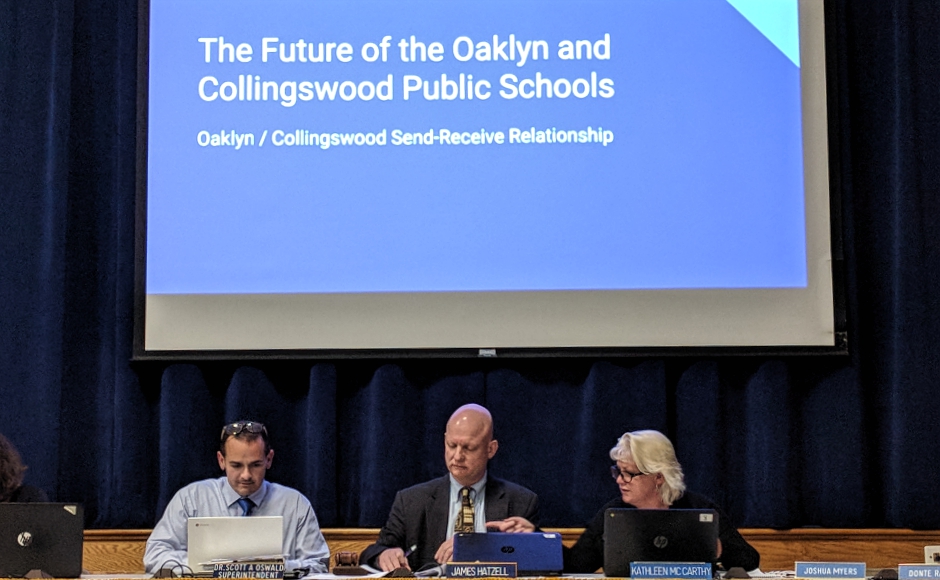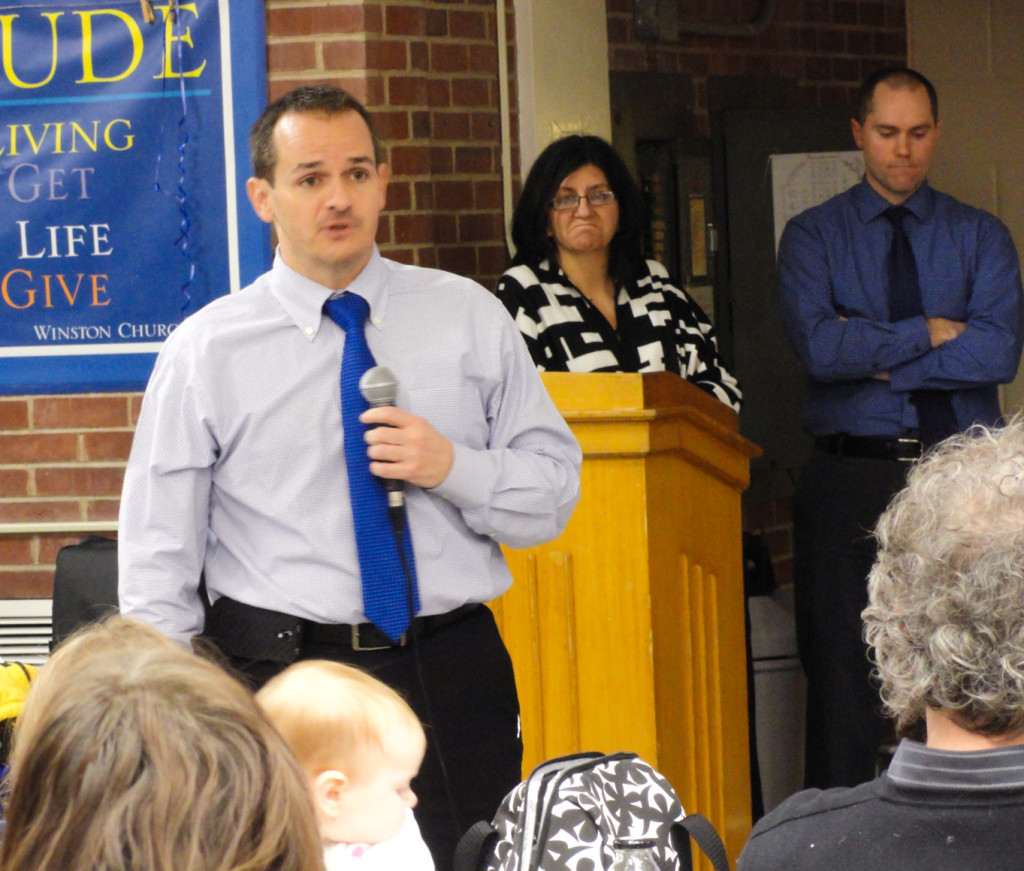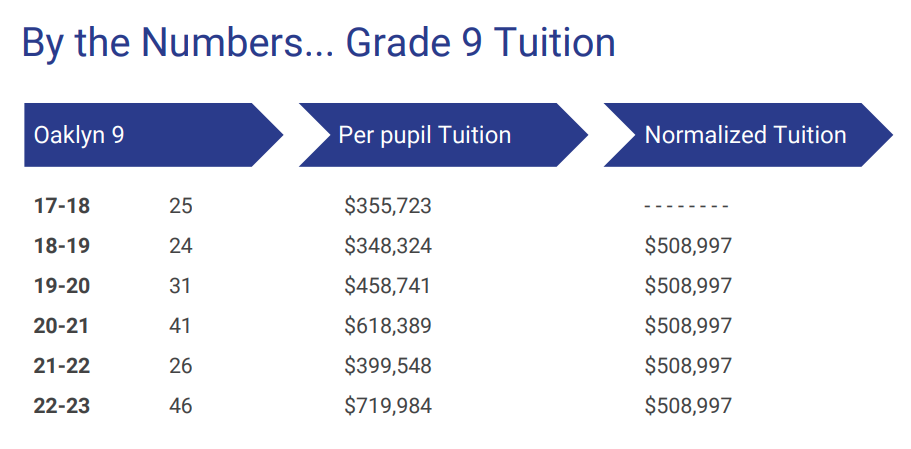This month, the school boards of both communities will vote on a plan to expand their send-receive relationship in 2018. Joint Superintendent Scott Oswald said the deal is a win-win.
By Matt Skoufalos | November 27, 2017
Since 2014, the Oaklyn Public School has examined the feasibility of sending more of its students to Collingswood. Credit: Matt Skoufalos.
In December, the Collingswood and Oaklyn school boards will vote on a proposal to expand the send-receive relationship between the two districts to include middle-school as well as high-school students.
After several years of studies, operational consolidation that has both districts sharing executive staff, and a series of program cuts, the option was presented as an antidote to financial instability in Oaklyn and slashed state aid in Collingswood.
Currently, Oaklyn sends its tenth-through-twelfth-graders to Collingswood High School; the change would see their peers in the sixth, seventh, eighth, and ninth grades joining them.
Without some remedy, both districts could face additional curriculum cuts or increased state oversight. Scott Oswald, who is superintendent of Oaklyn and Collingswood schools, said acting now gives the communities a chance to control their shared destiny.
“If we do nothing, the Oaklyn school district will run out of money,” Oswald said. “At some point, the state will have to step in and do something. To me, that’s a scary proposition because you don’t really want anybody who’s not in your community telling you what to do.”
In 2012, the Oaklyn school district was “literally teetering on the cliff of insolvency,” at one point with as little as $24,000 in bank, Oswald said.
Since then, the district has sold off assets, shared services with Collingswood, and absorbed increased benefit contributions from its employees.
But there’s no room left to tighten the belt.
Local taxes pay for more than 60 percent of the school district budgets in both Oaklyn and Collingswood.
Margins are so tight that even raising taxes to the 2-percent limit annually only yields a 1.28-percent revenue increase in Oaklyn and a 1.24-percent increase in Collingswood.
In the next five years, Oaklyn middle-school class sizes fluctuate by as many as 20 or more students annually. At a per-pupil cost of $12,000 or $13,000 per student, the community could be unable to raise enough money through taxes to fund its operations.
“That is not a sustainable equation,” Oswald said.
Compounding the problem is the current school funding formula, under which Collingswood lost $125,000 in state aid last year, and is still overfunded by $616,000.
“We cannot cut $616,000 worth of pencils and crayons,” Oswald said. “That’s going to cut into staff; that’s going to cut into programs.”
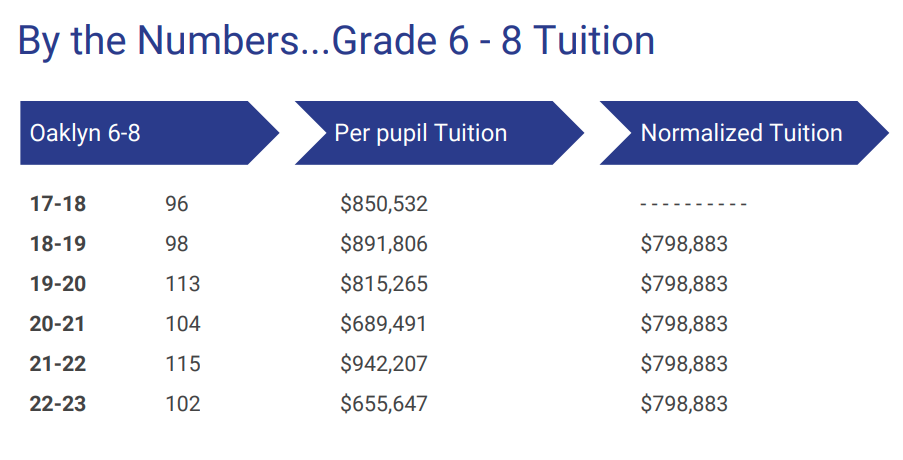
Normalized tuition for Oaklyn middle-schoolers gives the borough financial certainty, said Superintendent Scott Oswald. Credit: Collingswood Schools.
By sending its 6th-through-9th-grade Oaklyn students to Collingswood and normalizing their tuition rates, Oaklyn gains budgeting certainty and Collingswood nets some $450,000 to $500,000 annually, a stopgap against future cuts to state aid.
“At a time when a new governor is pledging to increase state aid, a re-elected senate leader has led the charge to redistribute all the aid,” Oswald said.
“Additional revenue provides an insurance margin.”
Under terms of the deal, Oaklyn would pay Collingswood an estimated $1.30 million in normalized tuition for students in grades six through nine from 2018-2023 ($508,997 for high-schoolers and $798,883 for middle-schoolers).
Middle-school teacher-student ratios would climb minimally, from 10.84 students for every teacher in Collingswood and 10.64 students per teacher in Oaklyn, to 11.49 under new configuration. After five years, the tuition rate could be renegotiated.
“We’re comfortable that Oaklyn can afford those numbers going forward, and you’re not going to see those crazy swings that kill your budget,” Oswald said.
The Oaklyn Public School would essentially become a pre-K through fifth-grade school with additional capacity, possibly for special education programs. Most importantly, Oaklyn would continue to operate its own school district, and both would get to function without more stringent operational scrutiny.
“There will never be a time when your kids wake up and think, ‘I don’t have a school to go to,’” Oswald told the Oaklyn community.
The move also offers some counterweight to program cutbacks, which in Oaklyn have included athletics for its seventh-through-ninth-graders as well as “limited opportunities outside of the core” curriculum of courses, Oswald said.
Collingswood Middle School, however, offers a deeper roster of electives: performing arts, foreign languages, advanced math and writing, and trades and foods. Its middle- and high-school teams already have welcomed Oaklyn students.
“By bringing some of this revenue increase to Collingswood, it will be able to maintain those programs,” Oswald told the Oaklyn community at a November 14 board of education meting. “Your students would come over.”
Although the deal offers a greater deal of local control, Oaklyn resident Adam Sherr said losing its middle-schoolers is “a big cultural shock” to the borough’s public school community.
“That’s a job for us in the community to solve,” Sherr said. “[But] I trust us more than I trust the state, regardless of who the governor is.”
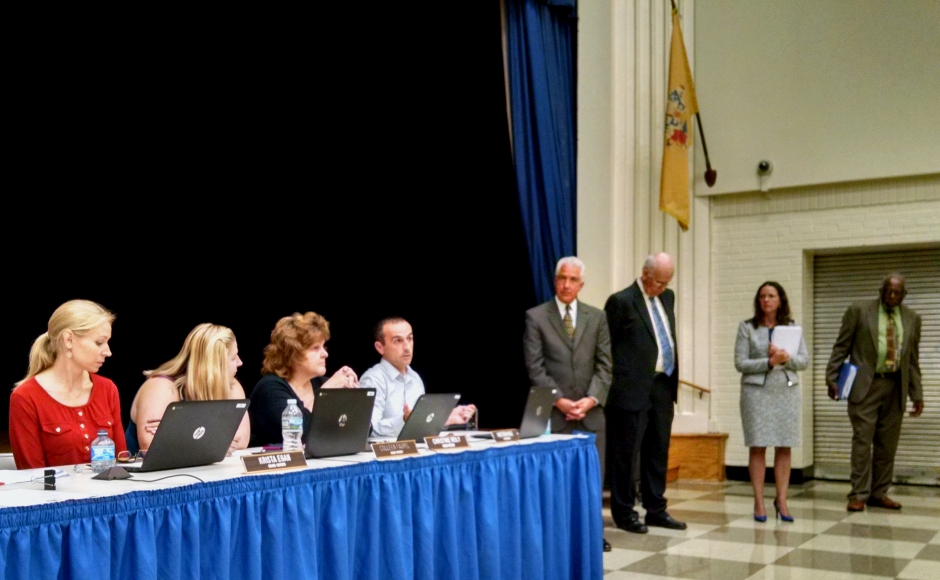
The Oaklyn BOE and consultants field questions from residents at a September 2016 meeting. Credit: Matt Skoufalos.
Importantly, the deal still allows Oaklyn to operate its own school district independently, as opposed to the tighter integration of a unified district, said Oaklyn Board of Education President William Stauts.
“The Oaklyn school district will not go away,” Stauts said. “Oaklyn [Public School] will now become the sixth [elementary] school in the [Collingswood] district.
“[Its students are] going to be just another kid from another school.”
Oswald also said he believes the send-receive deal is more likely to pass muster in both communities than a vote for full regionalization, which would turn more on property values and tax rates.
“My experience is there’s always a winner and a loser, and if you’re a loser, you’re not going to vote for it,” he said. “[Under that plan], Oaklyn’s Board of Education goes away, and they never control their own destiny.”
Related Coverage
- Oaklyn School Searches for Answers Amid Budget Shortfall (August 14, 2014)
- New Report Weighs Oaklyn, Collingswood School Merger (December 1, 2014)
- Collingswood, Oaklyn Stakeholders Contemplate ‘Tax-Neutral’ School Merger (December 10, 2014)
- Consultants Recommend Oaklyn School Expand Send-Receive with Collingswood (September 21, 2016)
- Clearly Defined Choices, Uncertain Outcomes in Oaklyn School Feasibility Study (November 16, 2016)

